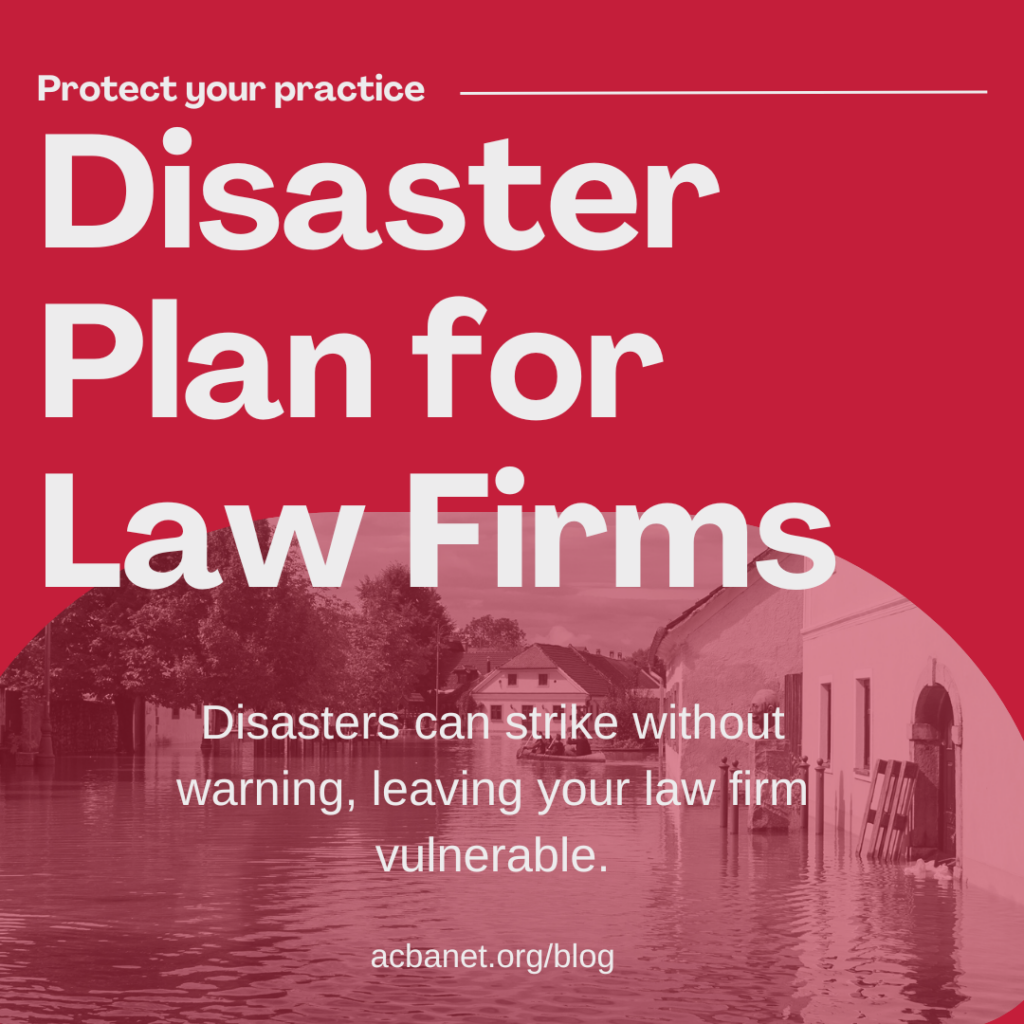Disasters can strike without warning, leaving law firms vulnerable to disruptions, data loss, and significant financial and reputational damage. To safeguard your practice and ensure business continuity, it is crucial to develop a well-thought-out disaster plan. In this blog post, we will guide you through the essential steps to create a comprehensive disaster plan for your law firm.
- Assess Risks and Vulnerabilities: Start by conducting a thorough risk assessment to identify potential hazards that could impact your firm. Consider both natural disasters (e.g., floods, earthquakes) and man-made incidents (e.g., cyberattacks, power outages). Evaluate the vulnerabilities of your physical infrastructure, data storage systems, and communication channels.
- Form an Emergency Response Team: Clearly define roles and responsibilities, and establish effective communication channels within the team.
- Develop a Communication Plan: Establish a robust communication plan to ensure effective and timely communication during a disaster. Maintain up-to-date contact information for employees, clients, vendors, and other key stakeholders. Determine primary and alternative communication methods (e.g., phone, email, messaging platforms) and ensure that everyone knows how to access and utilize these channels.
- Protect Data and Records: Preserving critical data and records is paramount. Implement regular and secure data backups, both on-site and off-site, to safeguard sensitive client information, case files, contracts, and financial data. Consider utilizing cloud-based storage for enhanced accessibility and redundancy.
- Establish Remote Work Capabilities: Plan for remote work scenarios in case your physical office becomes inaccessible. Ensure that employees have the necessary equipment, software, and access to work remotely. Test the functionality of remote work systems periodically to identify and address any potential issues.
- Document Disaster Response Procedures: Document step-by-step procedures for various disaster scenarios, including evacuation protocols, shutdown procedures, and recovery processes. Specify who has the authority to make critical decisions during an emergency. Include checklists and contact information for emergency services, insurance providers, and IT support.
- Train and Educate Employees: Regularly train and educate your employees on the disaster plan. Conduct drills and simulations to test their knowledge and readiness. Provide guidance on personal safety measures during emergencies and ensure that everyone understands their roles and responsibilities.
- Regularly Review and Update: Disaster plans should not be static documents. Regularly review and update your plan to reflect changes in personnel, technology, and potential risks. Stay informed about evolving threats and incorporate relevant improvements and lessons learned from past incidents.
Investing time and effort into creating a comprehensive disaster plan is crucial for law firms. By assessing risks, forming an emergency response team, establishing communication channels, protecting data, and regularly reviewing and updating the plan, you can mitigate the impact of disasters and ensure business continuity. Remember, being prepared today can save your practice tomorrow. Protect your firm and provide peace of mind for your clients and employees.
Looking for more resources? The ABA has more resources to use when putting together you disaster plan. Legal Access Alameda and the ACBA are also founding partners of California Disaster Legal Services Colaborative (DLAC) that provides free legal help for survivors of California disasters, and resources for volunteers, provided by trusted California nonprofit legal aid providers. Check them out today before you NEED their help.

